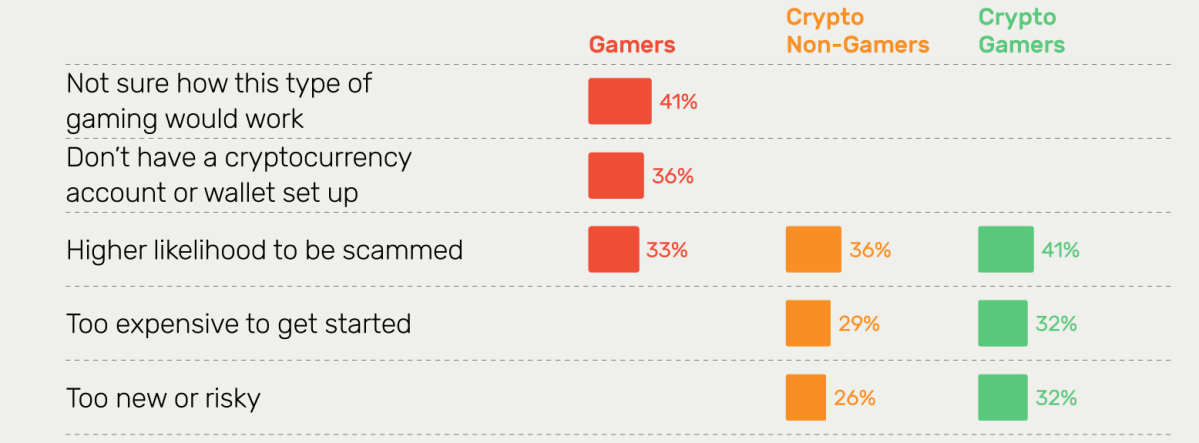A whopping US$5 billion was poured into the blockchain-based gaming sector across the first 6 months of this year, but Web3 games are arguably yet to see any major success with traditional gamers.
Why? According to a new survey from blockchain gaming company Coda Labs, traditional gamers repeatedly butt heads with technical issues that see them keep Web3 games at arms length.
The survey conducted in June this year took responses from 6,921 people in five different countries: Brazil, South Africa, US, UK and Japan.
When looking at why gamers are drawn to Web3 games in the first place, 65% of all respondents claimed that earning cryptocurrency for playing a game was the most significant drawcard. It additionally found that Play-to-Earn (P2E) games were the most widely recognised category of GameFi products.
Unfortunately, Web3 games present a series of problems, with the technical barriers of Web3 being the most prominent cause for concern in traditional gamers. More than 40% of traditional gamers were unsure of how Web3 games worked. Another 36% said that they didn’t have a crypto wallet set up and 33% said that scams were keeping them away from blockchain-based gaming.

Web3 Gaming
All of this evidence points towards the fact that traditional gamers are far more concerned with the playability of the games themselves over the allure of in-game earnings.
The perception of crypto by traditional gamers was also a problem, with the sentiment towards crypto falling into the negative category on behalf of respondents from the US, the UK and Japan. When asked to rank their feelings towards crypto on a scale of 1 to 10, respondents from these countries listed an average of 4.4 out of 10.

South Africa and Brazil had a more positive outlook, with overall feelings towards digital assets being ranked at an average of 6.95 out of 10.
Another study published by blockchain gaming service Chainplay at the beginning of September unearthed similar concerns for the GameFi industry. Despite the study finding that nearly three in four new crypto investors had been onboarded by blockchain-based games, crypto’s newest entrants were quite unhappy with their Web3 gaming experience.
Respondents in Chainplay’s report overwhelmingly found the fear of rug pulls and scams to be not worth the effort on their behalf. This negative outlook was then exacerbated by the oftentimes repetitive or boring nature of many GameFi products.
Theo Priestley, the CEO of GameFi developer Metanomic addressed some of these problems in a recent Medium post.
“The reason games exist is to provide entertainment — current play-to-earn games feel more like a job.”
Future success
Speaking to a new approach for developing sustainable tokenomics in GameFi, Priestly wrote that the identification of fun as a focal point of value in play-to-earn games would be crucial to future success in the space.
“The intrinsic value in a gaming environment comes from the fun players have from playing the game itself. This is the value that players would happily pay for, in terms of their time, and in terms of ‘real’ money,” he added.
Priestly went on to say that the fundamental barrier that GameFi has to overcome is how blockchain technology can add value to games, as opposed to extracting it.
The term ‘GameFi’ is a catch-all label for all blockchain-based games, such as Play-to-Earn (P2E) sensation Axie Infinity, Move-to-Earn (M2E) lifestyle apps such as STEPN and SWEAT.
Until Web3 gaming companies start making games that users actually want to play, and find a way for blockchains to be an asset to the in-game experience, GameFi products will continue to disappoint new players. As of today metaverse activity has waned significantly, and the glaring lack of any major utility in Web3 gaming shows reasons to keep playing that go beyond contrived tokenomics are in desperate need.



